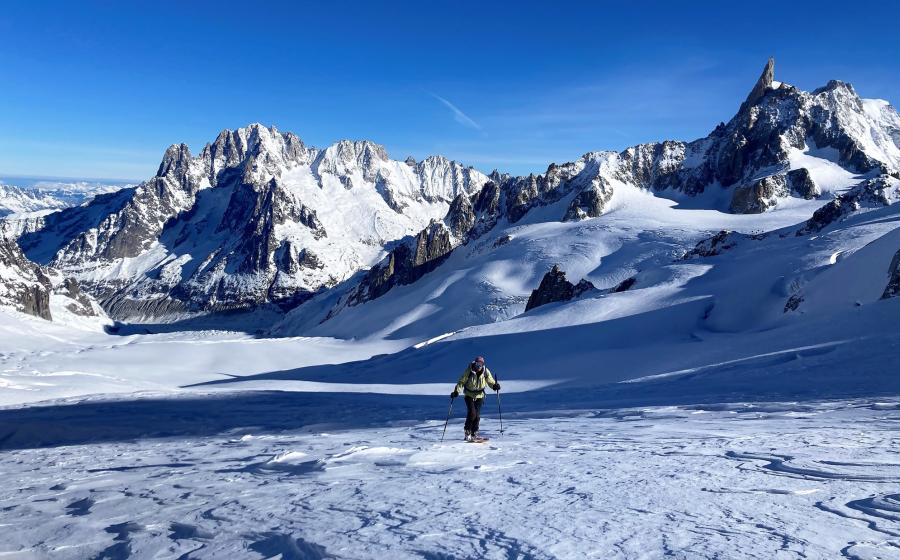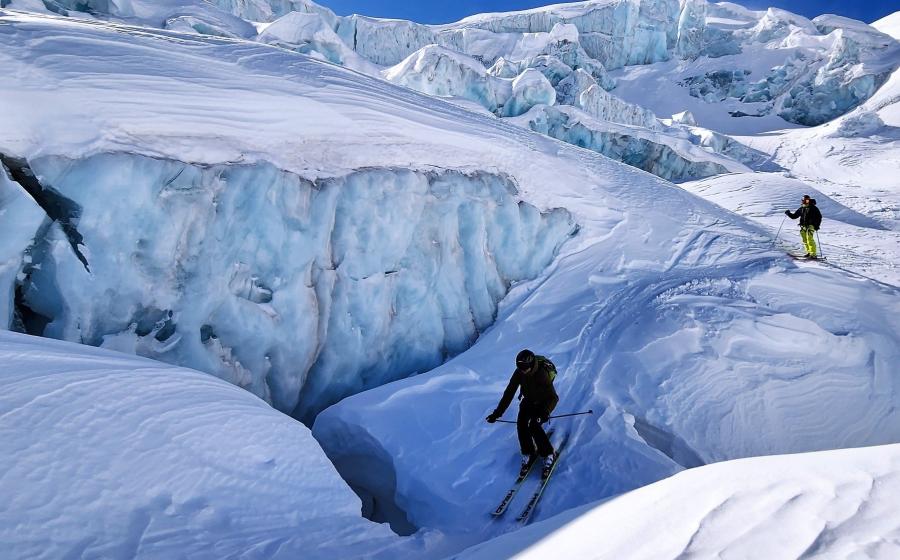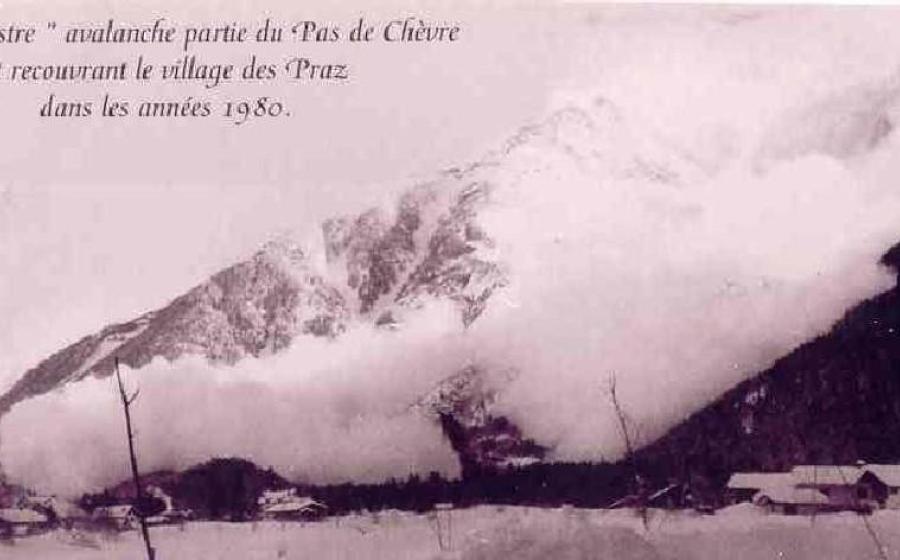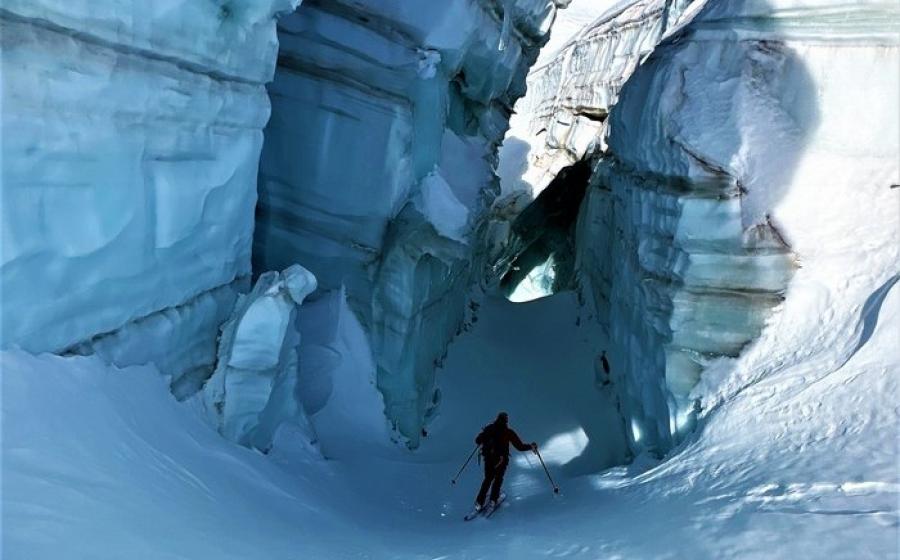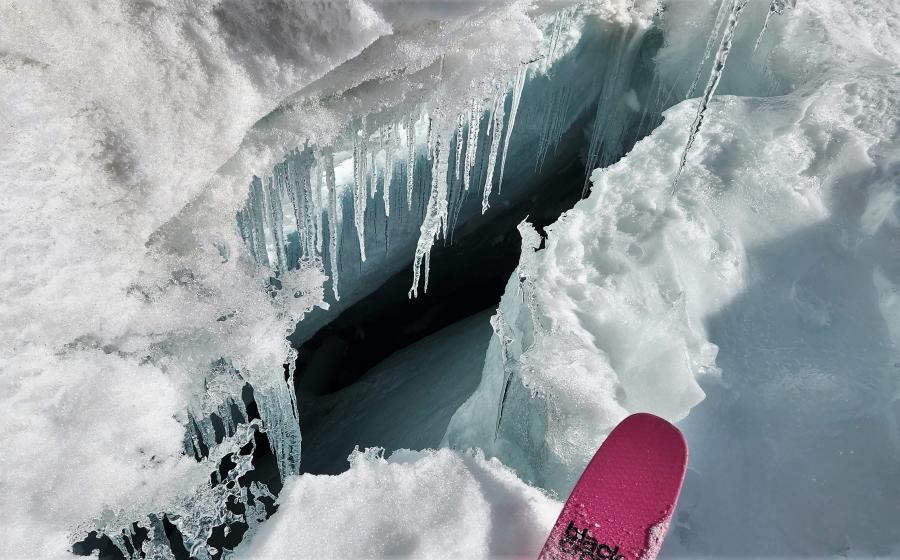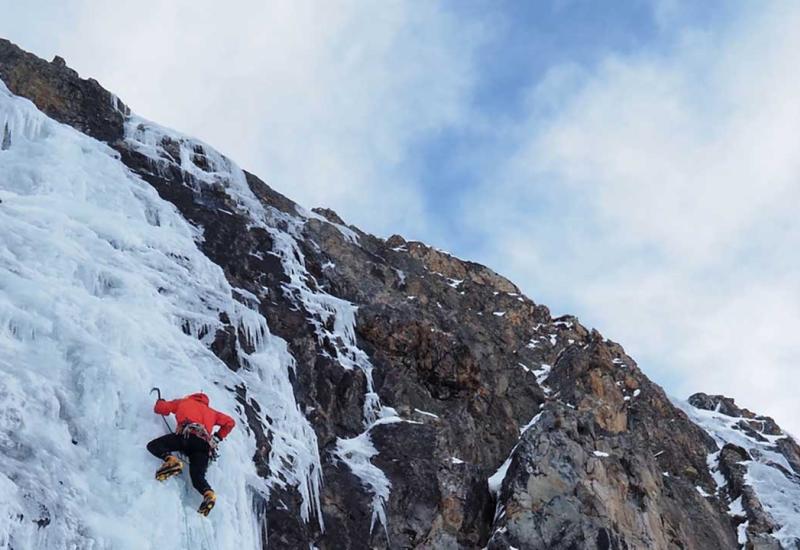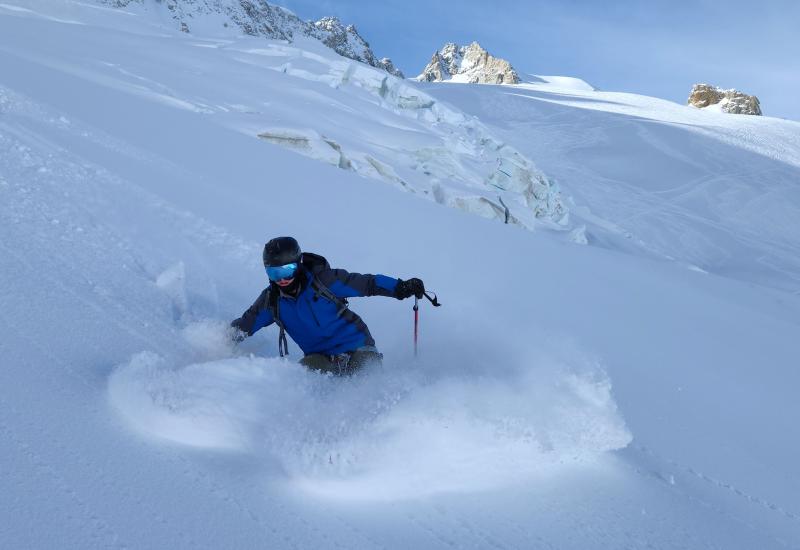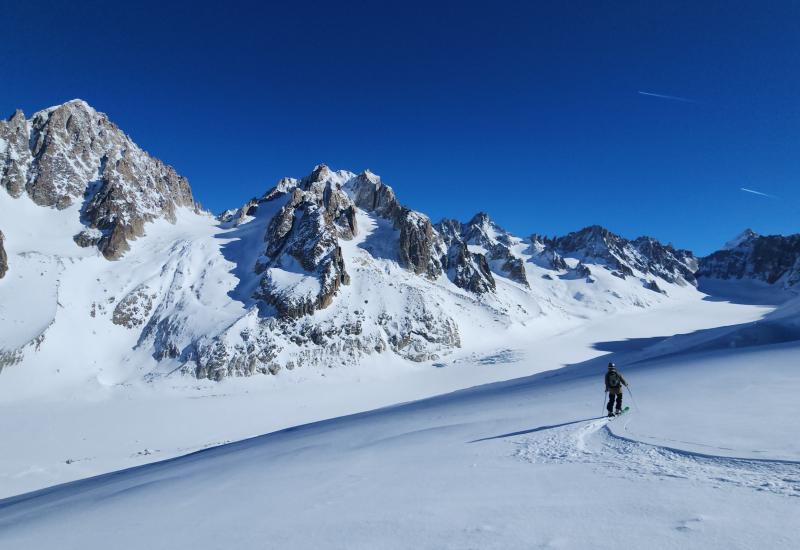Snow and security in the Vallee Blanche with Chamonix Ski Guide
Snow, Avalanche Safety, Rescue and Security
OBSERVATIONS AND COMMENTS:
The following ideas are not scientific but are useful as a guide the precautions to take when skiing off-piste.
FACTORS THAT AFFECT THE SNOW
The snow cover is composed of different layers, each one transforming at a different rate. We have to calculate the composition of each layer.
The snow changes consistently according to natural, topographic and human factors.
The natural factors are the heat, the cold, wind, gravity, humidity, the quantity of snow and the time of year. The topographic factors concern the location and steepness of the slope. The human factors are whether or not the slope has already been skied.
When choosing where and when to ski we have to think about all these things
NATURAL FACTORS
A long period of cold weather transforms the snow into unstable layers a little like ball bearings allowing the snow slabs to become slippery
Heat and humidity add to avalanches conditions but compact the snow thereby stabilising it.
In winter the sun touches the hillside often leaving the valley floor like an icebox. In spring however the sun is stronger and the conditions can change rapidly.
The wind can accumulate the snow making it crusty and difficult to ski or much worse into wind slabs or lips sensitive to passing skiers
Large snowfalls add to the avalanche risk.
TOPOGRAPHIC FACTORS
A north facing slope is less exposed to the sun than a south facing one so the snow transforms slowly which is great for powder snow but doesn't allow for a good stabilisation from the sun's rays .We can find good spring snow on a south facing slope yet on the north side the snow maybe frozen and unskiable. Powder snow on the north side may indicate heavy or crusty snow on the south side.
The location of the slope is important when considering the build up of wind slabs.
The suns rays affect the steeper slopes more quickly than gentle slopes.
HUMAN FACTORS
Recent experience has shown that tracked slopes are less likely to be avalanche prone. Skiers therefore aid the stabilising process.
Timing: Spring snow is frozen in the morning and becomes perfect for a couple of hours before becoming too humid and heavy. After a snowfall in April or May the powder has to be skied early before it transforms. It is also possible for the snow to be crusty with powder beneath it and it's worth waiting for this crust to melt off.
GLACIERS
The glacier like a rigid river takes the form of the slope and more crevasses are found on steep parts of the slope or where two glaciers converge.
Be aware of the snow cover on the glacier
To pick your way though a crevassed area it's best to find a high vantage point to check out the terrain. Look carefully at the rise and fall to pick out the crevasses, checking for cracks or shaded snow or subsidence. Be alert - it's best to keep checking your path.
The leader explains precisely which side of the path to follow and at what distance to ski down. Always stop above and before the leader and never take your skis off on a glacier. Stop in safe areas: Stationary you are more at risk to fall into a crevasse. When crossing snow bridges its best to keep a constant pace and be perpendicular. Don't hang around under seracs or icefalls. Rope up if the area is dangerous. Practise crevasse rescue or do an alpinist course.
CHOICE OF SKI RUNS AND CONDITIONS
Analyse the weather conditions very carefully. Watch the clouds, the wind, notice the snow level and be aware of temperature change. Recall similar situations at the same time of year and remember which slopes are more affected by heat .The choice of ski run is paramount and if you have made the right decision, it should be without problems.
Before starting observe the situation to confirm your opinions. In the cable car check out the conditions to suss out more information including the colour of the snow, tracks or not, the appearance of waves, wind, temperature. If something doesn't feel right than don't do it. While skiing look at the snow and find the best snow to ski.
Continue your day knowing that the snow is constantly changing
CONDUCT OF THE GROUP
Be aware of the effects that skiing in a group may have in underestimating the dangers. If it doesn't feel right, then don't do it.
Ski in a small group with the most experienced either in front or behind. Keeping everyone in sight, it's useful to have a good skier behind to help those less experienced and to redistribute the rescue material accordingly.
The leader goes first spotting the dangers, signalling to the group to keep left or right and keep together or separate. The leader stops where it is safe or protected and the group follow stopping behind in case of immediate danger {rocks, crevasse}
AVALANCHES
Avalanches occur after a heavy snowfall, due to skiers cutting an untracked slope or to a dramatic temperature rise and change in the consistency of the snow. Practise using avalanche rescue methods and carry an arva, a shovel and a probe.
Analyse the conditions. Check the weather forecast both locally and regionally for a more accurate prediction.
Convex slopes fall more easily than concave. Avoid areas where the snow has accumulated: windy zones, ridges, opposite slopes. Be aware of changes in the terrain. A smooth untouched slope is more dangerous than an irregular one and look for things that anchor the snow: forests, boulders, summits.
Respect an inter distance between skiers, sometimes skiing one at a time to reduce the risk. Go from one safe area to another, stopping in protected areas. Be conscious of those beneath you or others on the mountain that might not be as aware of the dangers. Place your skis in a good direction to avoid a potential avalanche.
PRUDENCE
Your consideration and experience in the mountains is your protection. It is foolhardy yet fashionable to think that armed with the latest technology, free riders may ride an avalanche. There are lots of things to consider when skiing off-piste and developing an understanding of the natural environment takes time. If despite all these precautions an avalanche occurs don't give up on these methods. The arva, the shovel, the probe {an indispensable trilogy} and the airbags and avalungs are a last chance. They are not life insurance and can give a false sense of security. Never think that because you have your arva its safe to go. These devices don't stop avalanches or reduce injuries or prevent death. Don't be certain of anything, even the experts know their limits.
BONNE GLISSE
Yan Raulet Mountain Guide Chamonix Off Piste Mountaineering Vallée Blanche Glacier Travel Ski Touring Climbing Mont Blanc

